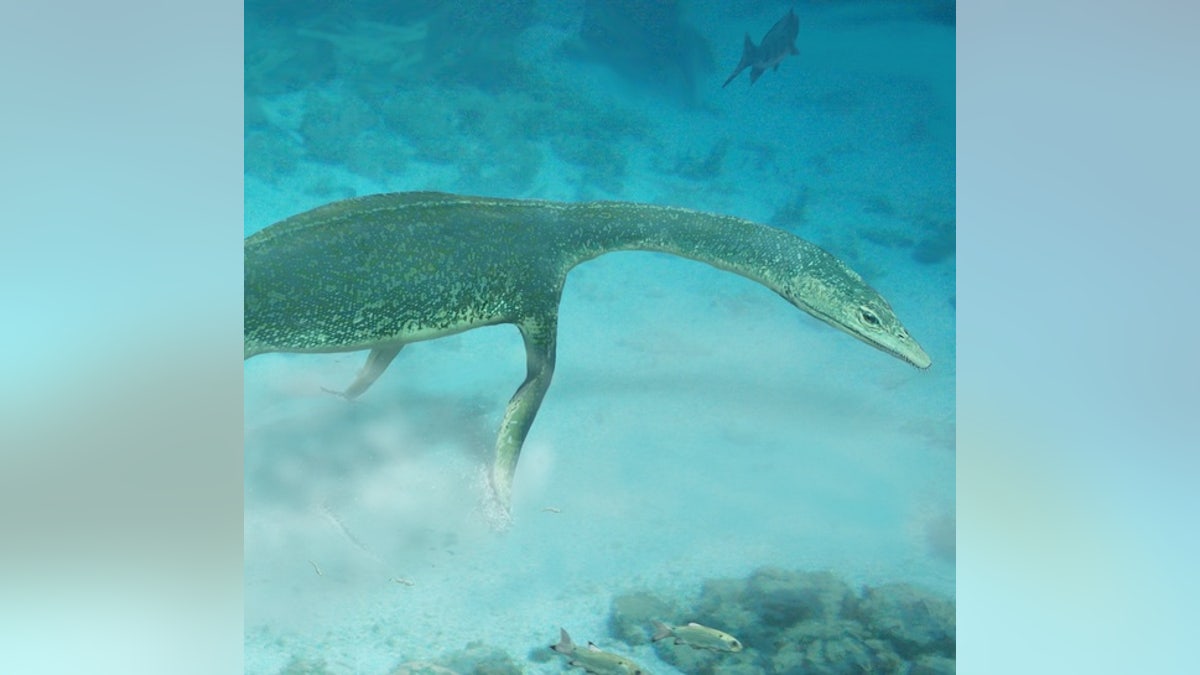
Ancient marine reptiles called Lariosaurs (a type of nothosaur) prowled the Triassic Seas for lobsters and other bottom-dwellers. (Original artwork © Brian Choo, 2014)
Predatory reptiles that trawled the oceans during the age of the dinosaurs used a rowing motion to scoop up prey, new track marks uncovered in China reveal.
The newly discovered tracks are from creatures called nothosaurs, the top predators of the seas during the Triassic period, which lasted from 251 million to 199 million years ago. The findings settle a long-standing debate about how the ancient sea creatures swam, said study co-author Michael Benton, a paleontologist at the University of Bristol in England.
The paddle prints were detailed today in the journal Nature Communications.
Accidental discovery
Nothosaurs were odd-looking marine reptiles that prowled the Triassic oceans about 245 million years ago. The predators sported paddlelike forelimbs and hind limbs, long necks and tails, and long jaws filled with small, pointy teeth, Benton said. [See Images of Nothosaurs and the Fossil Tracks]
Qi-yue Zhang, a member of the Chengdu Center of the China Geological Survey, was mapping geological features of China's Yunnan province, which is known for its stunning fossilized sea creatures, when he noticed several track marks on a ledge. The team dug up the area on the ledge and exposed 350 exquisitely preserved prints that formed about 15 different trackways, some of which looped around, Benton said.
The researchers then used photos and airborne laser scanning called lidar to map the tracks.
Marine reptiles
Next, the team compared the tracks with fossils from other animals that flourished during the same time period in that region of the world. The comparison ruled out other reptiles whose separated digits would have left imprints, as well as creatures that were too small or lacked the ability to touch the seabed with their front limbs without dragging their bellies on the bottom as well, Benton told Live Science.
That left the nothosaurs, with both the larger Nothosaurus, which could reach 13 feet in length, and the scrappy, 2-foot-long Lariosaurus as the likely culprits.
By analyzing the tracks, the team concluded that the nothosaurs may have rowed their front limbs into the seabed, floating their bellies above so they didn't scrape the seafloor. This rowing motion would have churned up the lobsters and fish that sheltered in the soupy sediment just along the seabed, Benton said.
"By punting along like this, the nothosaur flushed these edible morsels out and snapped them up," he said.
The new discovery sheds light on the ecosystems of about 8 million years after the end-Permian extinction, also known as the Great Dying, when about 96 percent of marine species and 70 percent of terrestrial animals perished, Benton said.
